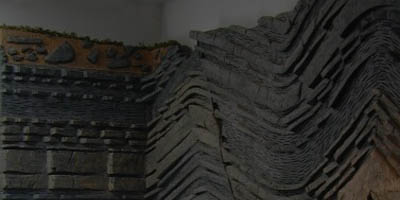Geology/Geophysics Seminar - Fall 2025 Seminars
Linking Climate, Hydrology, and Land Surface Hazards: From Landslides to Permafrost Thaw
Date: October 9, 2025 12:00 – 1:00 pm
Location: 3853 Slichter Hall
Presented by: Chuxuan Li — e.g., Harvard University
Extreme weather and a warming climate can trigger cascading hazards that reshape landscapes and endanger infrastructure. This seminar explores how hydrology, climate, and geomorphology interact to cause or amplify land surface hazards, such as landslides, flooding, and permafrost degradation. By combining hydrologic modeling and remote sensing data, this work enhances understanding of the processes that link surface water, ground ice, and slope stability. The findings highlight the importance of interdisciplinary research in predicting and mitigating climate-related geohazards.
Insights on Groundwater Renewability from Age and Residence Time Analysis
Date: October 16, 2025 12:00 – 1:00 pm
Location: 3853 Slichter Hall
Presented by: Dr. Bayani Cardenas — University of Texas, Austin
Groundwater renewability is a key factor in managing sustainable water resources in a changing climate. This seminar discusses new insights into groundwater age, flow pathways, and residence times across diverse aquifer systems. By integrating isotopic data and numerical modeling, the analysis reveals how recharge dynamics vary under different hydrogeologic settings. The results underscore the role of geologic structure and climate forcing in controlling groundwater sustainability and inform strategies for water management and policy.
Using meandering rivers to study the present and future carbon fluxes from Arctic landscapes
Date: October 31, 2025 12:00pm - 1:00pm
Location: 3853 Slichter Hall
Presented by: Emily C. Geyman — Caltech
The vast accumulation of carbon in Arctic soils—an estimated 1,700 Pg—has been referred to as a carbon bomb, a sleeping giant, and Pandora’s freezer. These terms all refer to the so-called ‘permafrost–carbon feedback,’ the cascading cycle in which warming temperatures destabilize permafrost soils, liberating large quantities of carbon to the atmosphere and driving further warming. But predicting whether Arctic landscapes will be a net source or sink of carbon requires tracking the transport and fate of the mobilized soil carbon and quantifying the strength of counteracting processes such as enhanced primary productivity of vegetation. I’ll show how the deposits of meandering rivers provide natural landscape-scale experiments that juxtapose frozen and thawed (permafrost and non-permafrost) terrain in the same environment, allowing us to track the changes to soil carbon and biomass reservoirs over timescales of years to millennia. These observations suggest that permafrost thaw may cause some Arctic landscapes to become a net carbon sink rather than a carbon source.
Deep subduction zone deformation: what exhumed rocks reveal about the slow slip and tremor source region
Date: November 21, 2025 12:00pm - 1:00pm
Location: 3853 Slichter Hall
Presented by: Whitney Behr — ETH Zurich
The deep sections of many modern subduction zones release strain through slow slip and tremor (SST), but the structures responsible, deformation mechanisms, and the role of syn-kinematic fluid flow remain hard to resolve from geodetic and seismologic data alone. Exhumed subduction zone rocks, such as those on Syros Island, Greece, provide key insights into the mechanical and hydrologic conditions within the SST source region. In this talk, I will present field-based and microstructural observations that reveal heterogeneity in viscosity, permeability, friction, and mineral fabrics, and discuss how these properties potentially influence deformation styles along subduction interfaces. These rock-based constraints help bridge the gap between geophysical observations and models, shedding light on the physical conditions that govern transitions between stable creep, slow slip, and seismic failure at depth.

